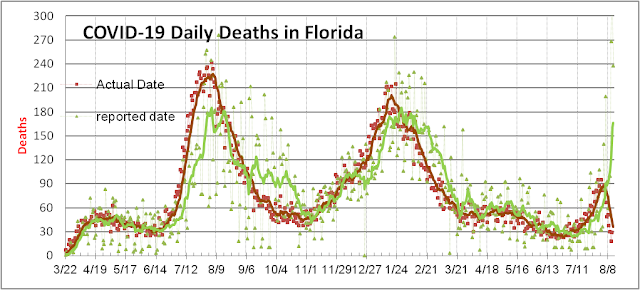How to Manage COVID-19 Risk Factors with Oximeters
The novel coronavirus
(SARS-CoV-2) attacks the human body primarily through the airways and the lungs. Classic symptoms of COVID-19, the disease caused
by the coronavirus, are fever, cough, and shortness of breath.
But for many – perhaps as many as half of those infected there are few
if any symptoms. People who suspect they
have been infected are asked to shelter in place and to check their temperatures
every day. But for those who do not
develop a fever or obvious shortness of breath or cannot get a COVID-19 test
due to shortages, they may ignore their problems for many days while the
disease silently ravages their lungs. A
better diagnostic tool than a thermometer could be an oximeter that is widely
available and not much more expensive than a thermometer and much more
accessible than a COVID-19 test. Oxygen saturation levels below 88% were found to be the most useful marker of critical illness in NY hospital admissions.
We now know
that COVID-19 mortality is strongly associated with age, gender, and comorbidities
such as obesity.
Obesity (BMI>40) and heart failure were the next most important indicators
after age. What is it about obesity that makes COVID-19 so much more deadly while other more suspicious conditions such as asthma do not seem to? We
suggest that another medical condition that is associated with obesity but sometimes ignored may be more
predictive of hospitalization and mortality: obstructive sleep apnea (OSA). OSA is known to be associated with age, gender, and obesity. Older men who are obese are
more likely to have sleep apnea than any other combination of demographic factors. While OSA has been clinically diagnosed in only
4% of American males and 2% of
American females, it
is suspected to afflict nearly 10% of the US population in milder/ undiagnosed
forms.
Sleep apnea
is a breathing disorder that may be greatly exacerbated by COVID-19 leading to
respiratory distress and possibly failure.
Moreover, we think that persons with sleep apnea may have learned to
adapt to mild oxygen deprivation and so that they may not notice a change in their
breathing pattern until the coronavirus has caused severe damage to the lungs –
leading to hospitalization and eventual death.
Sleep apnea patients on CPAP (Continuous Positive Airway Pressure) and
BiPAP (Bilevel Positive Airway Pressure) machines may actually feel no change
because small initial damage can be easily compensated by the machines at night, and more rapid breathing during the day.
However, the use of these machines can cause the disease to spread more rapidly
because CPAPs, unlike true ventilators, blow contaminated air into the room
that may circulate into the building causing widespread infections in apartment
buildings, nursing homes, veteran homes, prisons, etc.
We think it
is important to test this hypothesis immediately, but equally important to have
the CDC recommend the use of oximeters to detect and monitor potential victims
of COVID-19. As soon as they are
identified, they should be tested, isolated, and treated to reduce the risk of
infection to others.



Comments
Post a Comment